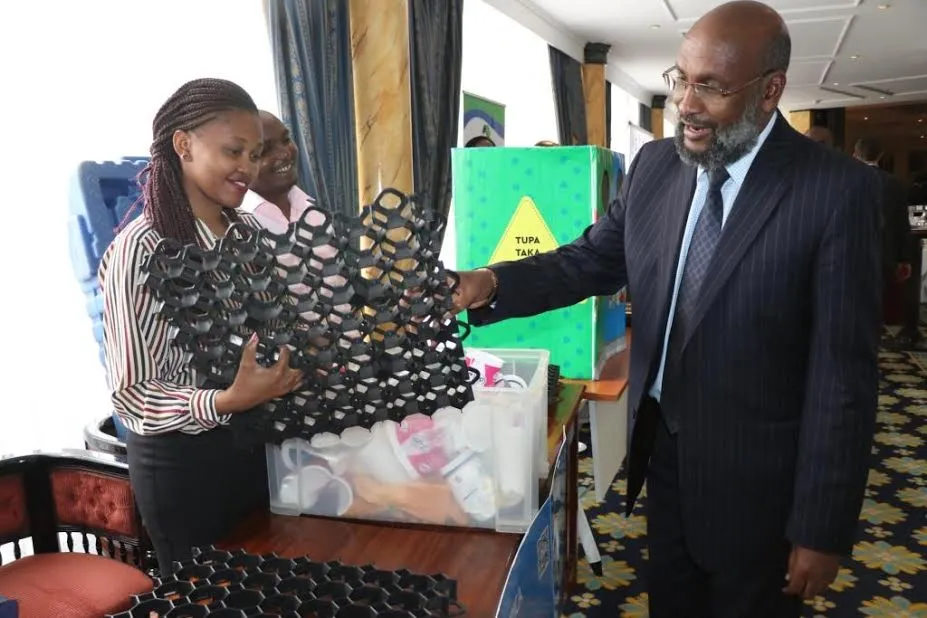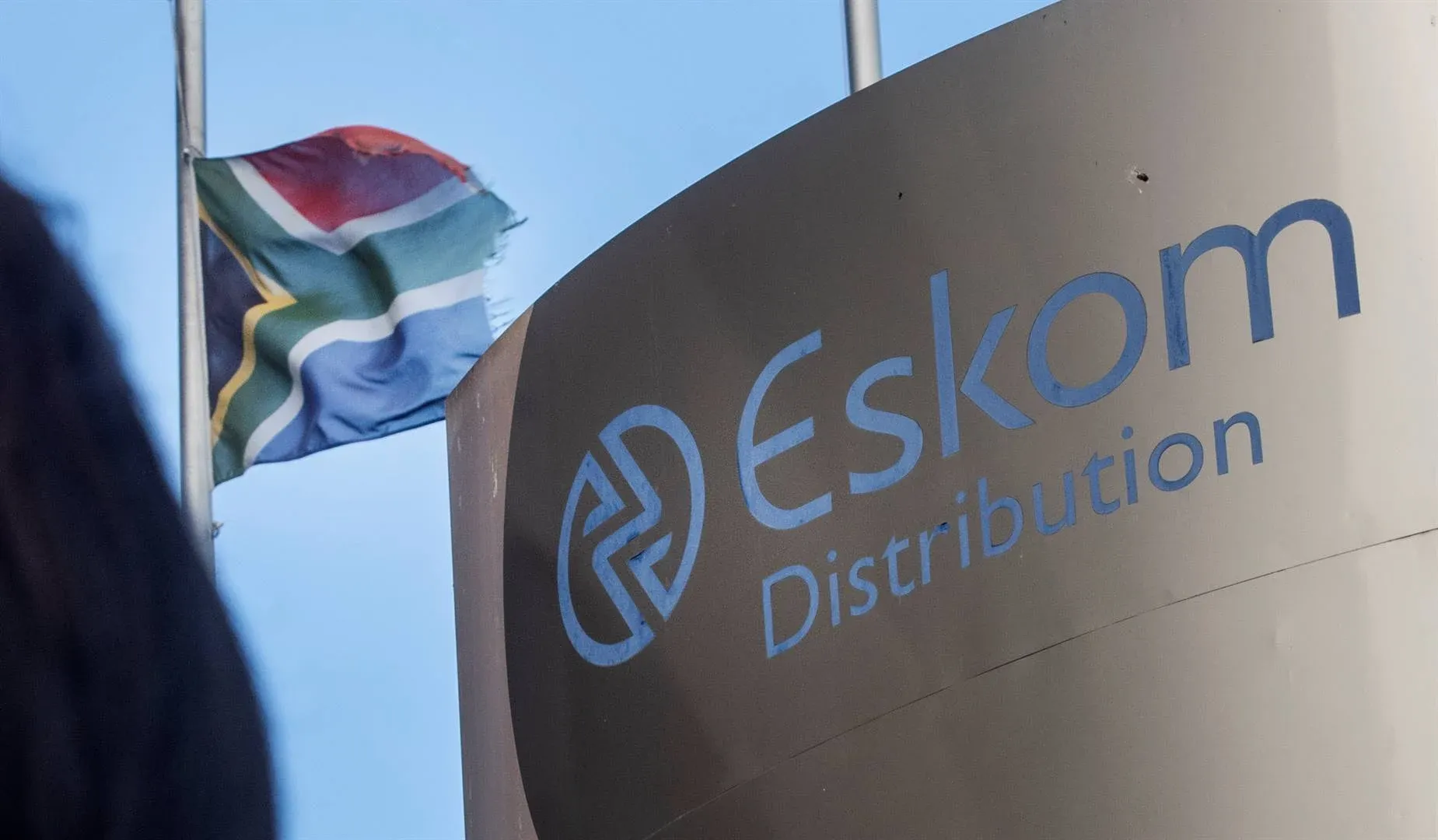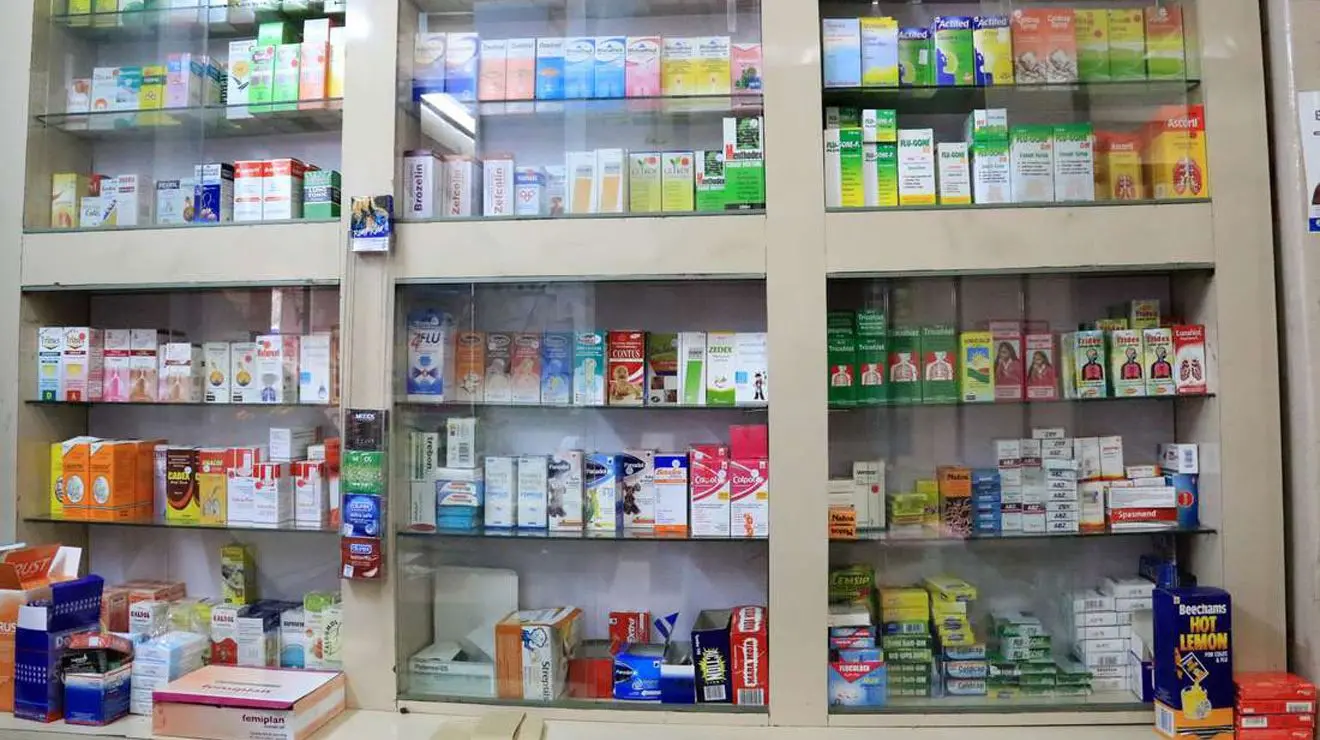Kenya’s private sector economy demonstrated encouraging signs of recovery during September, with the Stanbic Bank Kenya Purchasing Managers’ Index (PMI) climbing to 51.9 from 49.4 in August, marking the first time the closely-watched indicator has moved above the critical 50.0 neutral threshold since April.
The improvement represents a significant turning point for the East African nation’s business environment, signaling a broad-based enhancement in operating conditions following several challenging months characterized by disruptive political protests, elevated price pressures, and subdued consumer demand that had weighed heavily on business activity across multiple sectors.
Build the future you deserve. Get started with our top-tier Online courses: ACCA, HESI A2, ATI TEAS 7, HESI EXIT, NCLEX-RN, NCLEX-PN, and Financial Literacy. Let Serrari Ed guide your path to success. Enroll today.
Understanding the PMI Indicator and Its Significance
The Purchasing Managers’ Index serves as a crucial barometer of private sector health, compiled from monthly surveys of purchasing executives at hundreds of companies across various industries. A reading above 50.0 indicates expansion in business activity, while figures below this threshold signal contraction. The index synthesizes multiple components including new orders, output, employment, supplier deliveries, and inventory levels to provide a comprehensive snapshot of business conditions.
For Kenya, the PMI has become an increasingly important forward-looking indicator that policymakers, investors, and business leaders monitor closely to gauge economic momentum. The Central Bank of Kenya frequently references PMI data in its monetary policy deliberations, while international investors use the indicator to assess the country’s business climate and economic trajectory.
September’s reading of 51.9 represents not just a technical return to expansion territory, but signals genuine improvement in the operating environment for Kenyan businesses after a prolonged period of contraction and uncertainty.
Drivers of September’s Business Recovery
The recovery in Kenya’s private sector was underpinned by solid expansions across three critical dimensions: output, new orders, and employment. Survey data revealed that approximately 33% of participating firms reported growth in output during September, substantially exceeding the 23% that experienced declines during the month.
This positive differential between growing and contracting firms indicates that the expansion was broadly distributed rather than concentrated in just a few sectors or large companies. Many businesses attributed their improved performance to effective marketing strategies and strategic investments in products and services that resonated with evolving consumer preferences and needs.
The uptick in business activity reflects renewed confidence among Kenyan entrepreneurs and corporate managers who, after months of uncertainty, are beginning to perceive stabilizing conditions that justify expansion and investment. This psychological shift from caution to cautious optimism can be self-reinforcing as increased business activity generates employment and income that further supports demand.
Sectoral Performance: Winners and Challenges
While the overall picture showed improvement, performance varied considerably across different sectors of Kenya’s diverse economy. The services sector, which encompasses everything from financial services and telecommunications to hospitality and retail, showed particularly robust recovery. Many service businesses benefited from pent-up demand that had accumulated during the protest period when consumers and businesses postponed transactions and expenditures.
The manufacturing sector also contributed positively to the recovery, with production levels rising as new orders increased and supply chain conditions normalized. Manufacturers of consumer goods, food products, and packaging materials were among the strongest performers, responding to improved retail demand.
However, the construction industry continued to face sharp output declines, representing a notable exception to the broader recovery trend. Kenya’s construction sector has struggled with project delays, financing challenges, reduced government spending on infrastructure, and oversupply in certain commercial and residential property segments. The sector’s difficulties reflect both cyclical headwinds and structural challenges that will likely require time and targeted interventions to resolve.
The agricultural sector, while not extensively covered in the PMI survey which focuses primarily on manufacturing and services, plays a crucial role in Kenya’s economy. Recent favorable weather conditions in key agricultural regions have supported crop production, though farmers continue to grapple with input cost pressures and market access challenges.
Employment Growth: A Critical Economic Indicator
One of the most encouraging aspects of September’s PMI report was the robust employment growth, which rose at the quickest pace since May 2023. This development carries particular significance for Kenya, where youth unemployment remains a persistent challenge and job creation stands as a top economic policy priority.
The employment expansion reflects businesses’ confidence in sustained sales growth and their willingness to increase payroll commitments despite ongoing economic uncertainties. Companies reported hiring across various skill levels, from entry-level positions to skilled professionals, though competition for qualified talent in specialized areas remains intense.
With increased staff capacity, companies were able to reduce their backlogs of work for the fourth consecutive month, improving customer service and operational efficiency. This backlog reduction suggests that businesses are not just hiring to meet current demand but are positioning themselves to handle anticipated growth in coming months.
The employment gains have important multiplier effects throughout the economy. New jobs generate wage income that supports household consumption, increases tax revenues for government, and creates demand for goods and services from other businesses. For an economy like Kenya’s where formal sector employment remains limited relative to the working-age population, any expansion in quality jobs represents meaningful progress.
Supply Chain Improvements and Delivery Performance
Supply chain performance demonstrated remarkable improvement in September, with delivery times shortening at the strongest rate observed in four years. This represented a dramatic reversal from the supply disruptions that characterized the protest period when transportation difficulties, road blockages, and general uncertainty complicated logistics operations.
Vendors and suppliers actively sought to deliver items more quickly to secure business and maintain market share amid easing supply-side pressures. The normalization of road transportation, resumption of normal business hours, and improved security conditions all contributed to more efficient supply chain operations.
For businesses, shorter delivery times translate to reduced inventory requirements, lower working capital needs, and improved ability to respond to customer orders. In sectors like retail and hospitality where product availability directly impacts sales, supply chain reliability represents a critical competitive advantage.
The improvement in logistics and supply chain efficiency also reflects Kenya’s ongoing infrastructure investments, including ongoing upgrades to the national road network, expansion of digital logistics platforms, and modernization of port facilities at Mombasa, the country’s primary maritime gateway.
One decision can change your entire career. Take that step with our Online courses in ACCA, HESI A2, ATI TEAS 7, HESI EXIT, NCLEX-RN, NCLEX-PN, and Financial Literacy. Join Serrari Ed and start building your brighter future today.
Price Dynamics: Inflation Pressures Moderate
Input price inflation moderated for the second consecutive month in September, reaching its weakest level since May. This development provided welcome relief to businesses that had struggled with rising costs for raw materials, energy, and imported inputs throughout much of 2024 and early 2025.
The moderation in input costs occurred despite ongoing concerns about higher taxes implemented as part of the government’s revenue mobilization efforts and continued elevation in prices for essential items like fuel and food products. The deceleration suggests that some of the supply chain disruptions and commodity price spikes that had driven costs higher are gradually dissipating.
However, businesses reported that they increased their selling prices at a modest rate in September, slightly higher than the 12-month low recorded in August. This indicates that companies are attempting to pass through at least some of their accumulated cost increases to customers, though competitive pressures and price-sensitive consumer demand limit their pricing power.
The price dynamics reflect Kenya’s ongoing struggle with inflation, which, while moderating from peaks, remains elevated compared to the Central Bank’s target range. Food price inflation particularly impacts lower-income households who spend the majority of their income on basic necessities.
The Kenyan shilling’s relative stabilization against major currencies in recent months has helped moderate imported inflation, though the currency remains vulnerable to external shocks and shifts in investor sentiment.
Economic Context: Recovery from Q2 Disruptions
“Business conditions expanded in September, implying the start of a recovery after the disruptions that followed protests in Q2:25,” noted Christopher Legilisho, Economist at Standard Bank. “New orders and output strengthened as consumer demand improved, despite some firms reporting caution from clients due to still challenging economic conditions.”
The political protests that disrupted economic activity during the second quarter of 2025 were triggered by various grievances including proposed tax increases, concerns about government spending, and broader frustrations with economic conditions. The demonstrations, which involved road blockages and business closures in major urban centers, significantly impacted economic activity particularly in Nairobi and other major cities.
While the protest movement has largely subsided, the underlying economic challenges that contributed to public frustration persist. High living costs, limited employment opportunities for young people, and perceptions of corruption and misgovernance continue to create social and political tensions that could resurface if economic conditions fail to improve meaningfully.
The government’s response has included both policy adjustments—such as scaling back some proposed tax increases—and enhanced dialogue with various stakeholder groups. However, Kenya’s fiscal constraints remain severe, with public debt levels elevated and debt service obligations consuming a substantial portion of government revenues.
Purchasing Activity and Business Caution
Despite the improvements in output, orders, and employment, purchasing activity continued to decline in September. Businesses cited that weak sales in recent months had depleted their financial resources and limited their ability to acquire new inputs and raw materials.
This disconnect between improving current business conditions and constrained purchasing behavior reflects the cautious mindset that persists among many business managers. Companies are responding to current orders and demand but remain reluctant to build inventories or make significant advance purchases given uncertainty about whether the recovery will prove sustainable.
The conservative approach to purchasing also reflects widespread cash flow pressures among Kenyan businesses. Many companies exhausted financial buffers during the difficult months of political disruption and weak demand, and are now focused on rebuilding liquidity and strengthening balance sheets before resuming more aggressive expansion plans.
Access to business credit remains constrained for many smaller enterprises, with banks maintaining relatively tight lending standards despite recent interest rate reductions by the Central Bank. The interest rate environment, while improving, still presents challenges for businesses seeking affordable financing for working capital or investment purposes.
Business Sentiment and Future Outlook
Looking ahead, Kenyan businesses maintained strong confidence about future activity despite the challenges. While the optimism level dipped slightly compared to August, the 12-month outlook remained among the most positive observed in nearly three years.
Many firms reported specific expansion plans including opening new outlets or branches, diversifying product and service offerings to address evolving customer needs, increasing marketing expenditures to build brand awareness and market share, and investing in technology to improve operational efficiency.
This forward-looking confidence, even in the face of current challenges, reflects the inherent dynamism and entrepreneurial spirit that characterizes Kenya’s private sector. The country’s business community has demonstrated remarkable resilience through various crises including the COVID-19 pandemic, the 2022 election period, drought conditions affecting agricultural production, and the recent protest-related disruptions.
Technology and innovation continue driving transformation across multiple sectors of the Kenyan economy. The country’s advanced mobile money ecosystem, led by platforms like M-Pesa, has created infrastructure for digital financial services that businesses are leveraging for payments, credit access, and financial management. E-commerce, digital marketing, and online service delivery are expanding rapidly, particularly in urban areas with good internet connectivity.
Regional and International Context
Kenya’s economic performance and business conditions exist within a broader regional and global context that significantly influences outcomes. As the economic anchor of the East African Community, Kenya’s stability and growth have implications for neighboring countries including Tanzania, Uganda, Rwanda, Burundi, and South Sudan.
The country serves as a regional hub for logistics, financial services, telecommunications, and professional services, with many multinational corporations using Nairobi as their base for East African operations. This regional role creates opportunities but also means that economic difficulties in neighboring countries can impact Kenya through reduced trade flows and cross-border investment.
Globally, Kenya has been affected by the post-pandemic economic environment characterized by elevated inflation, higher interest rates in advanced economies, and geopolitical tensions that have disrupted supply chains and commodity markets. As a net importer of food and energy, Kenya remains vulnerable to global price shocks, though recent moderations in international commodity prices have provided some relief.
The country maintains important economic relationships with China, which has financed major infrastructure projects including the Standard Gauge Railway, and with Western countries including the United States and United Kingdom which are significant sources of investment, development assistance, and export markets for Kenyan products like tea, coffee, and horticultural products.
Policy Implications and Recommendations
The PMI recovery signals that Kenya’s policy mix—combining monetary easing by the Central Bank with fiscal consolidation efforts and structural reforms—may be beginning to yield positive results. However, sustaining and accelerating the recovery will require continued policy attention across multiple dimensions.
Monetary policy should continue supporting growth while remaining vigilant regarding inflation risks. The Central Bank’s recent interest rate reductions have been appropriate given moderating inflation, though policymakers must balance growth support with currency stability and inflation control objectives.
Fiscal policy faces difficult tradeoffs between the need for continued public investment in infrastructure, education, and healthcare versus pressures to reduce the fiscal deficit and manage debt sustainability. Improving revenue collection efficiency and reducing wasteful expenditure remain critical priorities.
Structural reforms to improve the business environment, reduce corruption, streamline regulations, and enhance competitiveness would support sustainable private sector growth. Kenya has made progress in some areas but continues to rank relatively poorly on various ease of doing business indicators compared to regional peers and aspirational comparators.
Conclusion: Cautious Optimism Warranted
Kenya’s private sector PMI recovery to 51.9 in September represents an encouraging development that suggests the economy may be turning a corner after months of disruption and weak performance. The broad-based nature of the improvement across output, orders, and employment provides grounds for cautious optimism.
However, significant challenges persist including elevated public debt, inflation pressures, limited fiscal space, infrastructure gaps, and social tensions related to economic hardship. The recovery remains fragile and could be derailed by renewed political instability, external shocks, or policy missteps.
For businesses, the current environment requires balancing cautious optimism with continued prudence in financial management and strategic planning. For policymakers, the challenge is sustaining recovery momentum while addressing underlying structural issues and building resilience against future shocks.
The coming months will be crucial in determining whether September’s PMI improvement represents the beginning of sustained recovery or merely a temporary respite before renewed difficulties. All stakeholders—government, business, and civil society—have roles to play in working toward a more stable, inclusive, and prosperous economic future for Kenya.
Ready to take your career to the next level? Join our Online courses: ACCA, HESI A2, ATI TEAS 7 , HESI EXIT , NCLEX – RN and NCLEX – PN, Financial Literacy!🌟 Dive into a world of opportunities and empower yourself for success. Explore more at Serrari Ed and start your exciting journey today! ✨
Track GDP, Inflation and Central Bank rates for top African markets with Serrari’s comparator tool.
See today’s Treasury bonds and Money market funds movement across financial service providers in Kenya, using Serrari’s comparator tools.
Photo source: Google
By: Montel Kamau
Serrari Financial Analyst
3rd October, 2025
Article, Financial and News Disclaimer
The Value of a Financial Advisor
While this article offers valuable insights, it is essential to recognize that personal finance can be highly complex and unique to each individual. A financial advisor provides professional expertise and personalized guidance to help you make well-informed decisions tailored to your specific circumstances and goals.
Beyond offering knowledge, a financial advisor serves as a trusted partner to help you stay disciplined, avoid common pitfalls, and remain focused on your long-term objectives. Their perspective and experience can complement your own efforts, enhancing your financial well-being and ensuring a more confident approach to managing your finances.
Disclaimer: This article is for informational purposes only and does not constitute financial advice. Readers are encouraged to consult a licensed financial advisor to obtain guidance specific to their financial situation.
Article and News Disclaimer
The information provided on www.serrarigroup.com is for general informational purposes only. While we strive to keep the information up to date and accurate, we make no representations or warranties of any kind, express or implied, about the completeness, accuracy, reliability, suitability, or availability with respect to the website or the information, products, services, or related graphics contained on the website for any purpose. Any reliance you place on such information is therefore strictly at your own risk.
www.serrarigroup.com is not responsible for any errors or omissions, or for the results obtained from the use of this information. All information on the website is provided on an as-is basis, with no guarantee of completeness, accuracy, timeliness, or of the results obtained from the use of this information, and without warranty of any kind, express or implied, including but not limited to warranties of performance, merchantability, and fitness for a particular purpose.
In no event will www.serrarigroup.com be liable to you or anyone else for any decision made or action taken in reliance on the information provided on the website or for any consequential, special, or similar damages, even if advised of the possibility of such damages.
The articles, news, and information presented on www.serrarigroup.com reflect the opinions of the respective authors and contributors and do not necessarily represent the views of the website or its management. Any views or opinions expressed are solely those of the individual authors and do not represent the website's views or opinions as a whole.
The content on www.serrarigroup.com may include links to external websites, which are provided for convenience and informational purposes only. We have no control over the nature, content, and availability of those sites. The inclusion of any links does not necessarily imply a recommendation or endorsement of the views expressed within them.
Every effort is made to keep the website up and running smoothly. However, www.serrarigroup.com takes no responsibility for, and will not be liable for, the website being temporarily unavailable due to technical issues beyond our control.
Please note that laws, regulations, and information can change rapidly, and we advise you to conduct further research and seek professional advice when necessary.
By using www.serrarigroup.com, you agree to this disclaimer and its terms. If you do not agree with this disclaimer, please do not use the website.
www.serrarigroup.com, reserves the right to update, modify, or remove any part of this disclaimer without prior notice. It is your responsibility to review this disclaimer periodically for changes.
Serrari Group 2025












